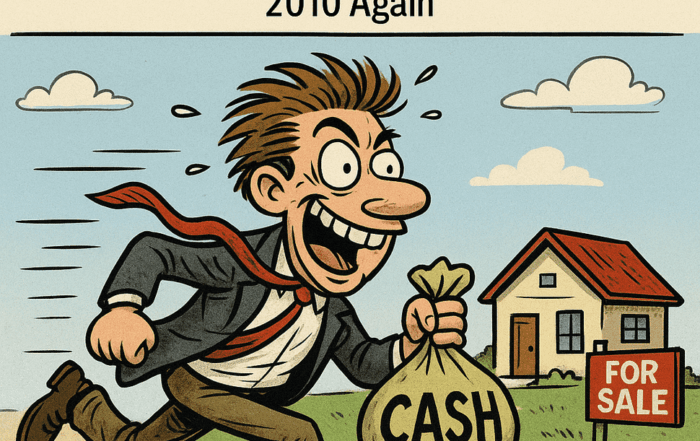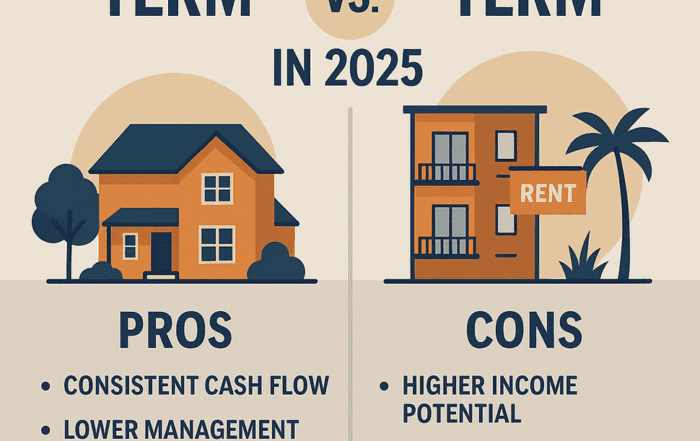Why Cash Flow Takes Time
Real estate investing is one of the most powerful ways to build wealth, but many investors grow frustrated when they don’t see immediate cash flow. The truth is, entering the market at the wrong time or not staying the course through a full real estate cycle can significantly impact your returns. If you’ve been disappointed with your cash flow, the issue may not be the property or market itself, but rather a lack of patience and understanding of the investment timeline.
Here, we break down why investors struggle with cash flow and why seeing the full cycle is critical to achieving your financial goals.
The Nature of Real Estate Cycles
Real estate operates in cycles, typically spanning several years. These cycles include periods of growth, stabilization, and sometimes decline. Let’s take an example from recent history. Investors who purchased properties around 2010 likely experienced flat or modest rent increases for the first few years. However, as the market rebounded, rents surged, often doubling by the end of the decade.
If you’ve entered the market during a high-cost or transitional phase, you may not see immediate cash flow. Rising taxes, insurance rates, and other expenses can eat into your profits early on. However, those who hold properties long enough to ride out the full cycle are often rewarded with substantial rent increases and appreciation.
Why Patience Is Key
Initial Flat Periods
When you invest in real estate, the first few years may feel underwhelming. Expenses like property taxes and insurance often rise faster than rents in certain market conditions. For instance, if you’re raising rent by 5% annually but property taxes increase by 10%, your margins will feel tight.
This flat period can discourage investors, leading them to sell prematurely. However, those who hold on typically find that as the market stabilizes, expenses begin to plateau while rental income accelerates. It’s during this later phase of the cycle that cash flow truly begins to shine.
Holding Through Market Shifts
Real estate is like wine—it improves with time. To get the most out of your investments, you need to commit to holding properties for at least five years, if not longer. This allows you to benefit from rent increases, stabilized expenses, and property appreciation. Short-term frustrations often lead to missed long-term opportunities.
Challenges Facing Investors
Rising Insurance Costs
One of the biggest complaints among investors today is the rising cost of insurance, particularly in markets with older properties. Insurance companies often charge higher premiums for homes built before the 2000s, citing increased risks and higher rebuild costs. While this has created short-term headaches, recent legislative changes are helping to stabilize insurance markets. Some policies have already dropped by as much as 40%, signaling better days ahead for property owners.
Property Taxes
Another significant challenge is rising property taxes. Local governments may propose sharp tax increases to account for budgetary needs or increased property values. While these increases can squeeze cash flow initially, it’s worth noting that taxes tend to stabilize over time, especially as governments adjust to new revenue levels.
Rent Increases and Tenant Turnover
Raising rents to match rising expenses can be a double-edged sword. While higher rents improve your cash flow on paper, they can also lead to higher tenant turnover if renters struggle to keep up. Striking the right balance between covering your costs and maintaining tenant stability is essential. Often, a gradual approach to rent increases is more sustainable than aggressive hikes.
The Path to Consistent Cash Flow
Staying in the Market
Investors who enter the market during a transitional phase—like a period of rising costs or flat rents—often feel tempted to exit when they don’t see immediate results. However, real estate is not a short-term game. Staying in the market long enough to complete a full cycle is essential for achieving consistent cash flow and maximizing returns.
Diversifying Strategies
If cash flow is your primary concern, consider diversifying your strategies. For example, short-term rentals may offer higher cash flow in certain markets, though they come with additional management challenges. On the other hand, long-term rentals provide stability and consistent income over time. The key is aligning your investment strategy with your financial goals and time horizon.
Managing Expectations
It’s important to enter the market with realistic expectations. Cash flow doesn’t happen overnight, and early challenges are part of the journey. Understanding that real estate is a long-term investment—not a get-rich-quick scheme—will help you stay the course and reap the rewards later.
Why Long-Term Rentals Still Work
After decades of experience, one thing remains clear: long-term rentals are still one of the most reliable ways to build wealth. Unlike stocks or other investments that can be disrupted by technology or market volatility, real estate is a tangible asset. People will always need a place to live, and rental properties provide an essential service that will never go out of demand.
In today’s market, more people are opting to rent rather than buy due to affordability concerns. This creates an excellent opportunity for landlords to provide housing while benefiting from consistent income. By holding properties over the long term, you can ride out market fluctuations and enjoy the compounding benefits of appreciation and rent growth.
Lessons Learned from Experience
After 20+ years in the real estate business and over 3,500 transactions, the lesson is clear: real estate rewards patience and persistence. Every market cycle has its challenges, whether it’s rising costs, flat rents, or tenant turnover. However, those who stay committed to their investment strategy and understand the long-term nature of real estate often achieve their financial goals.
The biggest mistake investors make is exiting too early. The flat periods are temporary, and history shows that they’re often followed by periods of explosive rent growth and appreciation. By holding onto your properties and weathering the storm, you position yourself for substantial gains in the future.
Final Thoughts
If you’re feeling frustrated with your cash flow, take a step back and evaluate your timeline. Have you held your properties long enough to see the benefits of a full real estate cycle? Are you managing your expectations and understanding that real estate is a long-term game? By staying the course and learning to navigate market challenges, you’ll set yourself up for success.
Real estate remains one of the most secure and time-tested ways to build wealth. It’s tangible, durable, and provides a level of stability that other investments can’t match. The key is patience—trust the process, and let the market work in your favor.
Keep it consistent, stay patient, stay true—if I did it, so can you! Let me guide you at propertyprofitacademy.com – Jorge Vazquez, CEO of Graystone Investment Group & its subsidiary companies and Coach at Property Profit Academy

Pick your expert. Book your free 15-minute consult now. We are here to help!
Our Top Articles
Opportunistic Buyers Are Back: Why Florida’s Real Estate Market Feels Like 2010 Again
Jorge Vazquez2025-07-09T01:10:13+00:00July 8th, 2025|Comments Off on Opportunistic Buyers Are Back: Why Florida’s Real Estate Market Feels Like 2010 Again
If you were around during the aftermath of the 2008 crash, you might remember that eerie silence around 2010—the [...]
Can Buying Real Estate in Florida Help You With Immigration?
Jorge Vazquez2025-07-07T18:54:31+00:00July 7th, 2025|Comments Off on Can Buying Real Estate in Florida Help You With Immigration?
Can Buying Real Estate in Florida Help You With Immigration? So you’re wondering, “If I buy a couple rental [...]
Long-Term vs. Short-Term Rentals in 2025: Which Strategy Wins?
Jorge Vazquez2025-07-07T03:10:20+00:00July 7th, 2025|Comments Off on Long-Term vs. Short-Term Rentals in 2025: Which Strategy Wins?
In 2025, the real estate world feels a little like a game show. Behind door one: long-term rentals—steady, reliable, [...]
Property Profit Academy:
✔ Learn to buy properties with little to no money down.
✔ Build a $10M portfolio step by step.
✔ Master strategies like BRRRR and house hacking.









